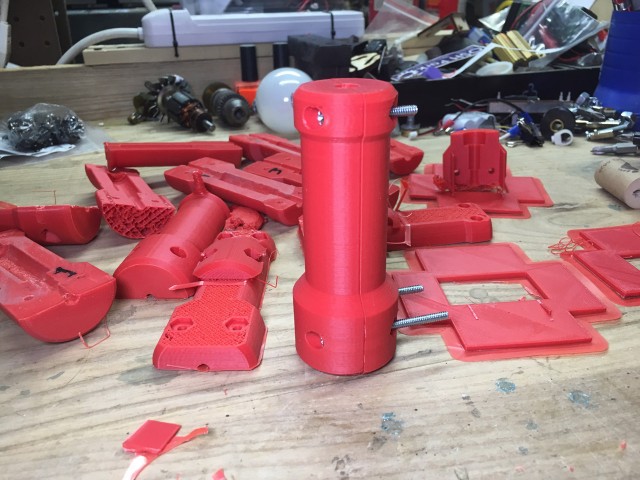
As you may know, I’m occasionally an artist, and create weird things that I show in public. Sometimes my work appears in galleries. Typically though, my work is not in galleries in Milwaukee, so it’s a real pleasure to be in a show right in my own hometown.
Var Gallery currently has some of my work on display at the Art+Tech show, which runs until February 3rd, 2018. The majority of my work for this show (I have about nine pieces) are from my NoiseMakers series, which was also at Maker Faire Milwaukee in 2017.

I’ve also got my Hammer of Futility at the show. (Which needed some minor repairs. Kinetic sculptures that run for weeks on end can be a challenge. I had to replace a motor, and I still need to drop in a controller to slow things down.)

The show was curated by Becky Yoshikane and Christina Ossers, who did a great job selecting work from Milwaukee artists involved in the Art+Tech scene. (Both are artist in their own right as well.)
Thanks to Nathaniel Stern, who I borrowed a few photos from. Also check out what Kat Kneevers had to say about the show: The Medium Becomes the Message at Var Gallery’s ‘Art + Tech’ and Jessica Fenlon’s post: Art+Tech @ VAR Gallery [Milwaukee, WI], so at least if you don’t see it, you can read about it.
If you’re a fan of Art+Tech, keep an eye out for another show coming up this spring. I can’t share any details yet, but hopefully we can keep this Milwaukee Art+Tech train kinetic sculpture moving!
























